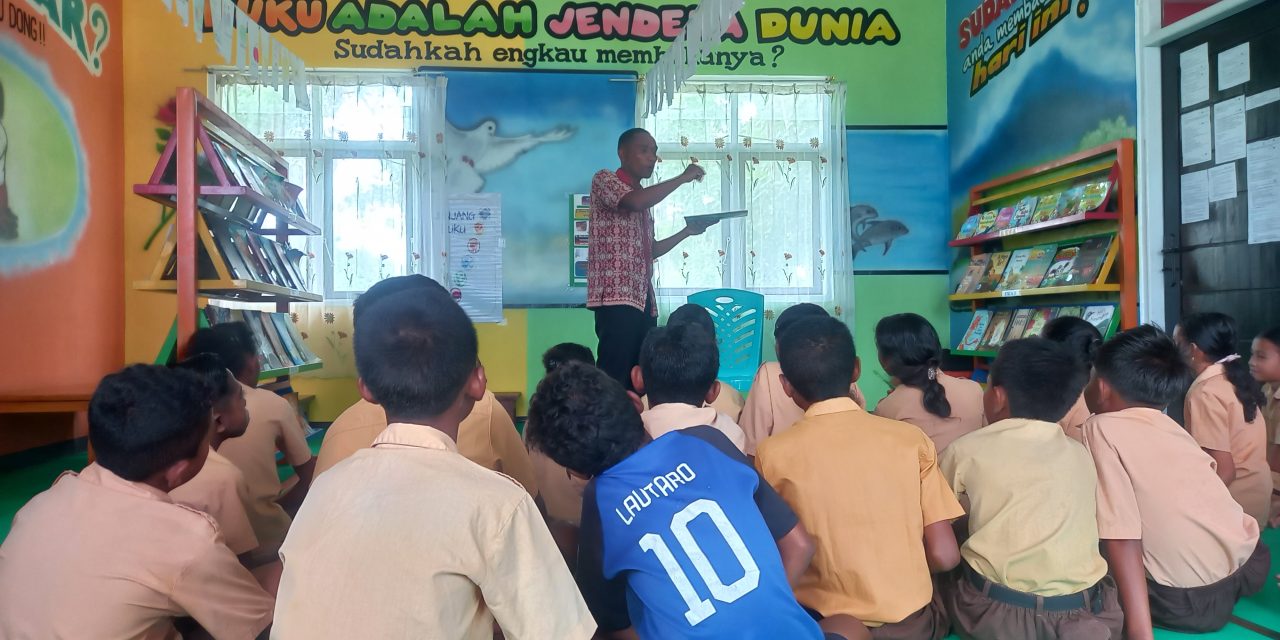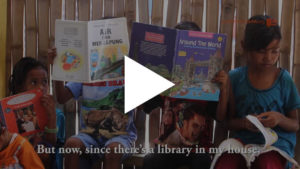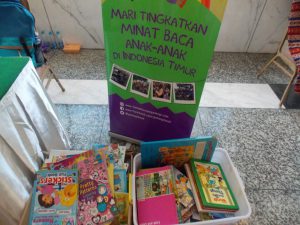One interesting commonality from our school partners is students finding it quite difficult to comprehend a story from a book. So, what is the solution?
Mr Franci, a grade 6 teacher from Nebe school, along with his 22 students have been doing reading aloud activity in their child friendly library. Mr Franci believes that students’ comprehension increases when he conducts reading aloud activity in the library. He says, “I can see that students generate more understanding about a story if reading aloud is combined with good intonation and facial expression”. Greater enthusiasm is also found when he adds simple questions such as “What’s the title of this book? Who are in the story? What did they do in the story? Were they successful at the end of the story?” post reading. These questions are usually asked to find out students’ comprehension of the story after reading aloud and make the activity more communicative.
This is different from what happens in the classroom in which this sort of enthusiasm can rarely emerge. He finally thinks that this should serve as the solution for students to comprehend the story from a book.
Previously, Mr Franci tended to rely more on independent and paired reading activities, thinking that they were more appropriate for grade 6 students. However, he identified the problem and came up with the idea of trying out this new activity to read aloud.
First, Mr Franci would start by asking how the students are doing to build a good rapport with them. Then, it continues with reading motivational poster attached on the library’s wall to boost students’ motivation to read. He subsequently asks students to read the library’s rules one by one to remind them about the do’s and don’ts in the library. After that, he shows the book’s cover and gives questions that can link the topic with students’ daily life to activate schemata, encourage prediction, build confidence, and generate interest in the topic.
While reading aloud, Mr Franci uses clear and good intonation and facial expressions as well as gestures different sounds that successfully attract students’ attention and establish a great comprehension of the story.
Finally, Mr Franci ends the activity with several questions that focuses on the main part of the story and motivates them to borrow and read books at home.
![Taman Bacaan Pelangi [Rainbow Reading Gardens]](/wp-content/uploads/2016/07/logo_taman_bacaan_pelangi_rainbow_reading_gardens_bilingual_d.png)















